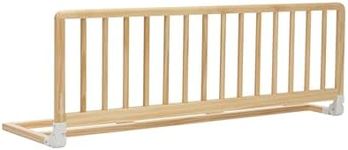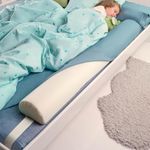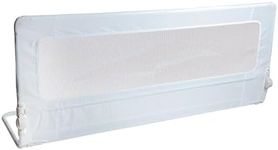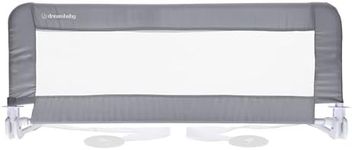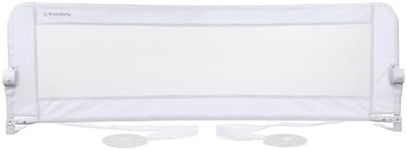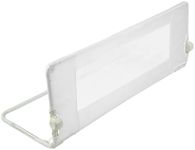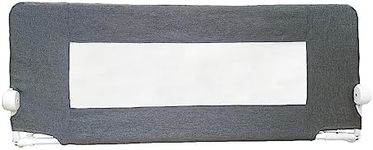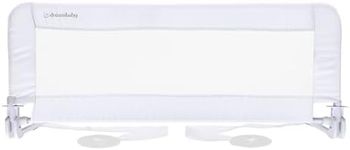Buying Guide for the Best Kids Bed Rails
Choosing the right bed rails for your child is crucial for ensuring their safety and comfort while they sleep. Bed rails help prevent children from accidentally rolling out of bed, providing peace of mind for parents. When selecting bed rails, it's important to consider several key specifications to ensure you pick the best fit for your child's needs. Here are the key specs to look out for and how to navigate them.Size and LengthThe size and length of the bed rail are important because they need to fit the bed properly and provide adequate coverage to prevent falls. Bed rails come in various lengths, typically ranging from half-length to full-length. Half-length rails are suitable for younger children who need less coverage, while full-length rails are better for older children or those who move around a lot in their sleep. Measure your child's bed and consider their sleeping habits to determine the appropriate size and length.
HeightThe height of the bed rail is crucial for ensuring it provides enough protection without being too high for your child to climb over. Bed rails usually range from 12 to 20 inches in height. For younger children, a lower height may be sufficient, while older children or those who are more active sleepers may benefit from a taller rail. Consider your child's age, size, and activity level when choosing the height of the bed rail.
MaterialThe material of the bed rail affects its durability, safety, and comfort. Common materials include metal, plastic, and fabric. Metal rails are sturdy and durable but may be less comfortable if your child bumps into them. Plastic rails are lightweight and often have rounded edges for safety. Fabric rails are soft and comfortable but may not be as durable. Consider the balance between durability and comfort based on your child's needs and preferences.
Ease of InstallationEase of installation is important because you want to be able to set up the bed rail quickly and securely. Some bed rails require tools and assembly, while others can be easily attached with straps or clamps. Look for bed rails with clear instructions and minimal assembly requirements if you prefer a hassle-free setup. Consider how often you may need to remove and reinstall the rail, such as for travel or cleaning, when evaluating ease of installation.
PortabilityPortability is a key factor if you plan to use the bed rail in different locations, such as when traveling or visiting family. Portable bed rails are typically lightweight and foldable, making them easy to transport and store. If you need a bed rail that can be easily moved, look for one that is designed for portability and comes with a carrying case or bag. Consider your lifestyle and how often you may need to move the bed rail when making your choice.
Safety FeaturesSafety features are essential for ensuring the bed rail provides maximum protection for your child. Look for bed rails with secure locking mechanisms, rounded edges, and non-slip bases. Some bed rails also have additional safety features like mesh panels for breathability and visibility. Evaluate the safety features based on your child's age and behavior, and choose a bed rail that offers the highest level of safety and security.
